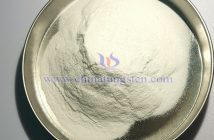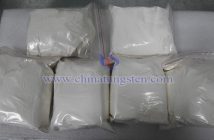Ammonium Metatungstate (AMT), produced by CTIA GROUP LTD, primarily consists of tungsten (W), oxygen (O), nitrogen (N), and hydrogen (H), with potential impurity elements such as iron (Fe), molybdenum (Mo), vanadium (V), sodium (Na), and potassium (K). These impurities, originating from raw materials, solvents, or process conditions, significantly influence AMT’s crystal structure, physicochemical properties, and application performance.

Picture of CTIA GROUP LTD ammonium metatungstate
I. Forms of Impurity Elements in AMT
AMT’s core structure is the Keggin-type polyacid anion [H?W??O??]??, composed of 12 WO? octahedra, stabilized by NH?? cations and crystal water. Impurity elements may exist in the following forms:
Doping into the Keggin Structure: Impurities like Fe, Mo, or V may substitute tungsten atoms or occupy the central heteroatom position.
Cation Substitution: Elements like Na? or K? may replace NH?? cations.
Surface Contamination: Impurities may appear as precipitates or adsorbed species on the crystal surface.
The type, concentration, and distribution of these impurities directly affect AMT’s properties.
II. Impact of Impurity Elements on Solubility
Impurity elements significantly alter AMT’s solubility (>3,000 g/L at 25°C in pure form).
Alkali Metal Cations (e.g., Na?, K?): Substitution of NH?? with Na? or K? modifies ionic interactions and the hydrogen bond network, reducing water solubility. For instance, Na?’s strong hydrophilicity may tighten the crystal structure, slowing dissolution.
Transition Metal Impurities (e.g., Fe3?, Mo??): Incorporation into the Keggin structure can disrupt crystal regularity, potentially increasing solubility. However, high concentrations may lead to insoluble byproducts (e.g., tungstates), lowering purity.
Optimizing raw material purity and process conditions minimizes these adverse effects on solubility.
III. Impact of Impurity Elements on Thermal Stability
AMT’s thermal decomposition occurs in stages: dehydration (100-200°C), NH?? decomposition (300-400°C), and Keggin structure collapse to WO? (>500°C). Impurities influence this process:
Alkali Metal Impurities (e.g., Na?): Larger ionic radii may enhance lattice stability, increasing the decomposition temperature.
Transition Metal Impurities (e.g., Fe3?, V??): These may introduce lattice defects or catalyze NH? release, lowering the decomposition temperature. For example, Fe3? can induce Keggin structure breakdown at lower temperatures, impacting AMT’s performance in high-temperature tungsten material preparation.

Picture of CTIA GROUP LTD ammonium metatungstate
IV. Impact of Impurity Elements on Chemical Stability
AMT’s Keggin structure is stable in acidic or neutral solutions but prone to depolymerization in alkaline conditions. Impurities affect this stability:
Alkali Metal Impurities (e.g., K?): These increase the tendency for depolymerization in alkaline environments due to their strong affinity for OH?, which accelerates tungsten-oxygen bond cleavage.
Transition Metal Impurities (e.g., Mo??, V??): When incorporated into the Keggin structure, these can modify the electronic structure, enhancing resistance to depolymerization in acidic conditions. However, they may introduce localized instability, and under strong oxidants, Mo??-doped AMT may undergo structural reorganization.
V. Impact of Impurity Elements on Catalytic Performance
As a catalyst precursor, AMT’s catalytic performance is modulated by impurity elements.
Transition Metal Impurities (e.g., V??, Mo??): Doping the Keggin structure alters surface acidic sites and redox properties, often enhancing catalytic activity. For instance, V??-doped AMT shows improved electron transfer efficiency in oxidation reactions. Low-level doping (e.g., 1-2% Mo) optimizes catalytic performance, but excessive impurities disrupt crystal order, reducing efficiency.
Iron Impurities (e.g., Fe3?): These may introduce unintended active sites, lowering catalytic selectivity.
Alkali Metal Impurities (e.g., Na?): These neutralize acidic sites, diminishing acid catalytic performance.



